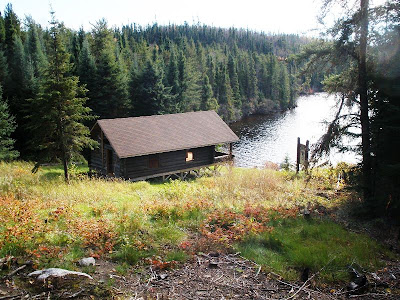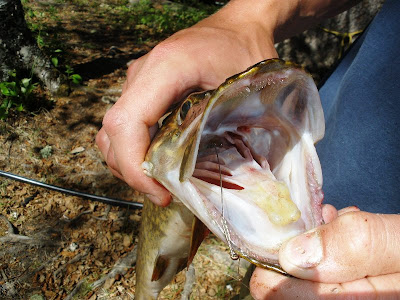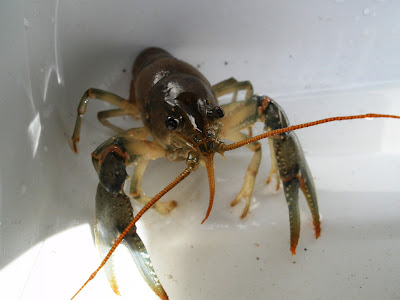
Angler Steve Wilhelm brings some fish in a burlap bag to the fish house at camp last summer.
We have used burlap bags for keeping fish for 50 years now at Bow Narrows Camp and my great-uncle Bill Baughman used them at his camp, Rainbow Lodge on Pickerel River, Ontario, for nearly as long before us. So collectively we have been using the bag system for keeping fish for nearly 100 years. And we've never seen anything that worked better -- not stringers, not mesh baskets and not livewells.
Did you ever notice how it's the simple things that work best? Well, there's nothing simpler than this.
Here's how the system works. Dip the bag (also known as a keep sack) in the lake to get it wet. Put the fish in the bag and lay it on the bottom of the boat. The evaporation of the water from the bag produces a cooling of the fish. It's the same principle of the old cowboys' blanket canteens.
You can keep fish in excellent shape this way all day. Just dip the bag back in the lake if it dries out.
Although it seems counter-intuitive, it's actually a bad idea to keep fish alive once you've decided to keep them. For one thing, keeping fish on stringers or in livewells will make them excessively slimy. This is because the mucus on their skin needs to be continually washed away by the fish's swimming forward.
A lot of the stereotypes people use about northern pike comes from the fact they kept their fish on stringers. I've seen pike kept overnight on a stringer that seemed to be encased in a mucus-gelatin. They had to be blasted with a hose and let dry in the sun for several hours before they could be cleaned.
Fish in the bag never get this way. They are clean and cold and not slimy.
Fish kept on stringers and in livewells also get water-logged. Their stomachs are full of water when we clean them and their flesh is soft. Again fish in burlap bags are not like this. Their flesh is as firm as if it had been kept on ice.
When you keep fish on a stringer you also stand a good chance of losing them. I wish I had $10 for every time someone using a stringer lost the entire stringer overboard or forgot to bring it in the boat and the propeller chopped up the fish or another fish "ate" the fish on the stringer. It's just not a good idea.
We've tried other types of bags and have found that only the burlap "potato sacks" work. Burlap is organic and is absorbent and this has something to do with it. On the downside, burlap decays quite rapidly so we must get new bags about three times a summer.
If you are new to camp, there is a supply of bags on the drying line beside the fish house. When you bring your fish to the fish house for cleaning, you can leave your bag in the cleaning bins with your cabin number and grab another bag to take back to your boat.
Click to go back to our website:
Click to see the latest on the blog:



















